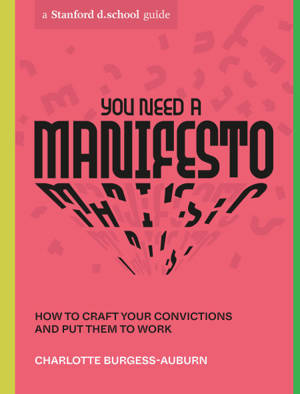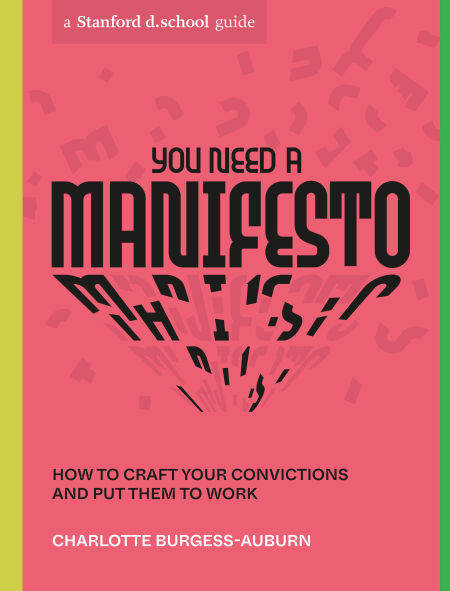
- Afhalen na 1 uur in een winkel met voorraad
- Gratis thuislevering in België vanaf € 30
- Ruim aanbod met 7 miljoen producten
- Afhalen na 1 uur in een winkel met voorraad
- Gratis thuislevering in België vanaf € 30
- Ruim aanbod met 7 miljoen producten
Zoeken
You Need a Manifesto E-BOOK
How to Craft Your Convictions and Put Them to Work
Charlotte Burgess-Auburn
€ 14,36
+ 14 punten
Uitvoering
Omschrijving
An essential how-to for crafting a guiding motto that sets intentions, increases creativity, and helps accomplish your goals, from Stanford University's world-renowned Hasso Plattner Institute of Design, aka the d.school.
We all need agency to feel the power and joy of acting in the face of challenge and opportunity. But we also need humility and restraint to ensure that we guard against hubris and harm. We need trusted and testable navigation tools to give us confidence in our creative power and cautiousness in carrying out our work. Instead of looking for answers, what we are all seeking are tools for navigating the increasingly complex, noisy, conflicted culture that we inhabit. A personal manifesto is one of those tools.
In You Need a Manifesto, Charlotte Burgess-Auburn, the d.school's director of community, first defines the challenges of information overload we all experience today. Then she explains the importance of creating a personal mantra or motto to use in the face of daily tasks and roadblocks, walking you through the steps of creating more purpose in your work.
Explanations and hands-on design-based exercises are interwoven with vibrant quotes and excerpts from a curated collection of designers, artists, writers, scientists, and social activists. These quotes serve both as inspiration and material for the activities.
Each chapter of the book is also preceded by a graphic by artist and letterpress printer Rick Griffith, who created his illustrations in response to the material in each chapter, to guide and inspire you to see what you can produce for yourself.
We all need agency to feel the power and joy of acting in the face of challenge and opportunity. But we also need humility and restraint to ensure that we guard against hubris and harm. We need trusted and testable navigation tools to give us confidence in our creative power and cautiousness in carrying out our work. Instead of looking for answers, what we are all seeking are tools for navigating the increasingly complex, noisy, conflicted culture that we inhabit. A personal manifesto is one of those tools.
In You Need a Manifesto, Charlotte Burgess-Auburn, the d.school's director of community, first defines the challenges of information overload we all experience today. Then she explains the importance of creating a personal mantra or motto to use in the face of daily tasks and roadblocks, walking you through the steps of creating more purpose in your work.
Explanations and hands-on design-based exercises are interwoven with vibrant quotes and excerpts from a curated collection of designers, artists, writers, scientists, and social activists. These quotes serve both as inspiration and material for the activities.
Each chapter of the book is also preceded by a graphic by artist and letterpress printer Rick Griffith, who created his illustrations in response to the material in each chapter, to guide and inspire you to see what you can produce for yourself.
Specificaties
Betrokkenen
- Auteur(s):
- Uitgeverij:
Inhoud
- Aantal bladzijden:
- 96
- Taal:
- Engels
- Reeks:
Eigenschappen
- Productcode (EAN):
- 9781984858078
- Verschijningsdatum:
- 3/10/2022
- Uitvoering:
- E-book
- Beveiligd met:
- Adobe DRM
- Formaat:
- ePub

Alleen bij Standaard Boekhandel
+ 14 punten op je klantenkaart van Standaard Boekhandel
Beoordelingen
We publiceren alleen reviews die voldoen aan de voorwaarden voor reviews. Bekijk onze voorwaarden voor reviews.











